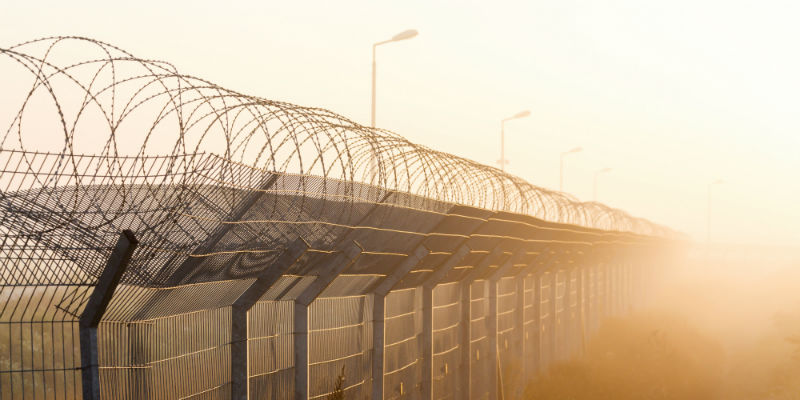Almost a quarter of Americans view immigration as the most important problem facing the country, according to a poll conducted this summer. It’s the highest the number has risen since Gallup began running the poll back in 1993. Though people throughout the country remain fiercely divided in their views on immigration, they are united in their growing preoccupation with it.
As the topic has moved toward center stage in public debate, much of the conversation has centered on the government’s response to incoming migrants from Central America and whether or not it should do more to secure the country’s southern border. While these questions are significant, a more important question gets asked far less frequently: why are migrants making this journey in the first place?
Immigration from Central America to the United States is often a risky and expensive undertaking. Smugglers charge thousands of dollars to transport individuals and families across the border, requiring most to take out substantial loans. This often means that even if migrants fail to reach their destination, they must try again, since they have no hope of repaying the loans without earning higher wages.
The non-financial costs are often much higher. According to Amnesty International, as many as 20,000 migrants are kidnapped by gangs each year. Horrifyingly, an estimated six in ten women and girls are raped. Gangs demand “tolls” for safe passage, and reports of extortion and abuse by police and officials are common. People routinely die from exposure and thirst in the arid, unforgiving desert.
Yet in spite of the unfathomable risks and cost, hundreds of thousands of people are still willing to make the journey. This begs the question: what’s driving people to make such a drastic and dangerous decision, and will any strategy aimed at stopping them have a lasting effect so long as that driver remains?
Migration is a workaround
It’s clear that both migrants and the nations where they relocate would benefit from a better solution. So what if we thought about the problem differently?
To start with, let’s take a step back. Migrants from Central America face particularly desperate circumstances like gang violence and extreme poverty, but they aren’t the only ones trying to solve problems in order to make progress in their lives. We all do it in one way or another every day, selecting the best solution available to us given our unique, albeit usually less harrowing circumstances.
For instance, every year high-school seniors consider which opportunities and experiences will best prepare them to excel in the job market, and the solution many choose is a college degree from a four-year university. There are other options—they can sign up for an apprenticeship, internship, or coding bootcamp, among other opportunities—but some ultimately decide that a four-year college degree best suits their unique goals and interests. Put another way, preparing for full-time employment is a “job” they need to get done, and college is the solution they “hire” to do it. We refer to this concept as the Theory of Jobs to Be Done.
In the same way, migrants fleeing Central America have their own Jobs to Be Done—whether it’s helping an aging mother receive the healthcare she needs, trying to escape gang violence, or trying to create a better future for a child. Many of these jobs fall into the category of “help me create a better life for myself and my family,” and the solution that’s hired is a long dangerous journey northward to get that job done. It doesn’t take much to see that this is a woefully suboptimal solution—such a journey could be no one’s first choice—but given the circumstances in which many migrants find themselves, it’s often the best one available. Migration is a workaround for people that don’t have better options.
Use a carrot, not a stick
The key to solving the migration crisis, then, isn’t trying to stop migrants in the middle of their journey; it is providing would-be migrants with better alternatives so they don’t have to start.
So, how can it be done?
Currently, people flee Central America in hopes of escaping the poverty and crime that plague the region. However, history shows that innovation—specifically market-creating innovations can lay the foundation for prosperity to emerge in some of the most difficult environments.
Market-creating innovations transform complicated, expensive products into simple, affordable ones, and pull people who couldn’t afford those previous products into brand-new markets. These new markets create profits and new jobs that bolster the economy, and provide much-needed tax revenue for governments strained for resources. Newly-created markets also naturally pull in needed infrastructure and institutions as the firms and governments who benefit from them make investments to support business operations and provide education and training for employees. What’s more, as more people gain dignified work that enables them to solve their problems and gain a better life where they are, they may begin seeing their society in a brighter, more hopeful light, building people’s trust in institutions and in each other. Poverty and violence won’t disappear overnight, but this process will allow innovative people to chip away at them until they begin to diminish.
North American governments can facilitate market-creating innovations within the borders of their southern neighbors by enabling local innovators through incentives such as financing and training programs. Our research suggests that these investments will have much better returns, both for migrants and for the countries to which they would otherwise migrate, than simply increasing spending on short-run border solutions that can only ward off migrants temporarily.
None of this is to say that governments should stop worrying about the migration crisis in the near-term; they shouldn’t. It presents both humanitarian and security dilemmas that leaders can’t ignore. But only responding to the immediate symptoms of the crisis is not a sufficient solution. Leaders also need a long-term strategy that enables would-be migrants to create a better life where they are, without having to resort to the dangerous, costly alternative of migration. Unless governments address the core issue of why migrants make the grueling journey in the first place, the crisis will never end.
Visit: https://www.christenseninstitute.org/global-prosperity/ to learn more about ways to create prosperity in low- and middle-income countries.


